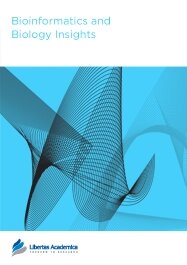

Publication Date: 17 Feb 2010
Type: Original Research
Journal: Bioinformatics and Biology Insights
Citation: Bioinformatics and Biology Insights 2010:4 9-17
doi: 10.4137/BBI.S4337

Many proteins contain a large number of NXS/T sequences (where X is any amino acid except proline) which are the potential sites of asparagine (N) linked glycosylation. However, the patterns of occurrence of these N-glycosylation sequons in related proteins or groups of proteins and their underlying causes have largely been unexplored. We computed the actual and probabilistic occurrence of NXS/T sequons in ABC protein superfamilies from eight diverse eukaryotic organisms. The ABC proteins contained significantly higher NXS/T sequon numbers compared to respective genome-wide average, but the sequon density was significantly lower owing to the increase in protein size and decrease in sequon specific amino acids. However, mammalian ABC proteins have significantly higher sequon density, and both serine and threonine containing sequons (NXS and NXT) have been positively selected—against the recent findings of only threonine specific Darwinian selection of sequons in proteins. The occurrence of sequons was positively correlated with the frequency of sequon specific amino acids and negatively correlated with proline and the NPS/T sequences. Further, the NPS/T sequences were significantly higher than expected in plant ABC proteins which have the lowest number of NXS/T sequons. Accord- ingly, compared to overall proteins, N-glycosylation sequons in ABC protein superfamilies have a distinct pattern of occurrence, and the results are discussed in an evolutionary perspective.
PDF (782.02 KB PDF FORMAT)
RIS citation (ENDNOTE, REFERENCE MANAGER, PROCITE, REFWORKS)
BibTex citation (BIBDESK, LATEX)
XML
PMC HTML
The publication of our paper in Bioinformatics and Biology Insights was highly professional and very pleasant on all levels: the guidelines for authors are concise, the online submission system is user-friendly, the comments from the reviewers were insightful and improved our paper, and the preparation of the manuscript for publication was efficient. I particularly liked the fast feedback from the staff on the state of the submission and review process.

All authors are surveyed after their articles are published. Authors are asked to rate their experience in a variety of areas, and their responses help us to monitor our performance. Presented here are their responses in some key areas. No 'poor' or 'very poor' responses were received; these are represented in the 'other' category.See Our Results
Copyright © 2013 Libertas Academica Ltd (except open access articles and accompanying metadata and supplementary files.)
Facebook Google+ Twitter
Pinterest Tumblr YouTube